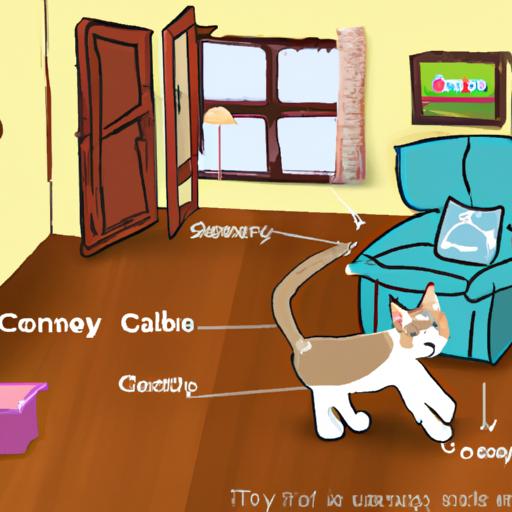
Tips for Creating a Cat-Friendly Living Room
Discover valuable tips for creating a cat-friendly living room. From vertical space to cat-friendly furniture, learn how to create a purrfect haven for your feline friend.
Introduction
As cat owners, we all want our furry friends to feel comfortable and happy in our homes. Creating a cat-friendly living room is essential to provide them with a space where they can thrive and enjoy their surroundings. In this article, we will explore some valuable tips to help you transform your living room into a purrfect haven for your feline companion.
Tips for Creating a Cat-Friendly Living Room
1. Providing Vertical Space for Cats to Climb and Perch
Cats love to explore and observe their surroundings from elevated positions. By incorporating cat trees, wall-mounted shelves, or even tall bookcases, you can provide your furry friend with vertical space to climb, perch, and survey their kingdom. This not only satisfies their natural instincts but also helps to keep them entertained and mentally stimulated.
2. Choosing Cat-Friendly Furniture and Materials
When selecting furniture for your cat-friendly living room, opt for pieces that are designed with feline needs in mind. Look for furniture made of durable materials that can withstand scratching and are easy to clean. Avoid delicate fabrics that can be easily damaged or stained. Additionally, consider investing in furniture with built-in hiding spots or cozy nooks where your cat can retreat and feel secure.
3. Creating Hiding Spots and Cozy Areas
Cats are known for their love of hiding in small, enclosed spaces. Provide them with cozy hiding spots such as covered beds, tunnels, or even dedicated cat caves. These secluded areas offer a sense of security and privacy for your feline companion, allowing them to relax and recharge in their own little sanctuary.
4. Ensuring Proper Scratching Options
One of the most common challenges faced by cat owners is dealing with furniture scratching. To prevent your beloved couch from becoming a scratching post, offer your cat suitable alternatives. Provide a variety of scratching posts in different textures and orientations, such as vertical and horizontal options. Place them strategically throughout the living room to encourage your cat to use them instead of your furniture. Regularly trimming your cat’s nails and using deterrent sprays can also help redirect their scratching behavior.
FAQ (Frequently Asked Questions)
Can I have plants in a cat-friendly living room?
Yes, you can have plants in a cat-friendly living room. However, it’s essential to choose plants that are non-toxic to cats. Some popular cat-safe plants include spider plants, Boston ferns, and areca palms. Always research the toxicity of plants before introducing them to your home to ensure the safety of your furry friend.
How can I minimize the chances of my cat scratching the furniture?
To minimize furniture scratching, provide your cat with suitable scratching posts and regularly trim their nails to prevent them from becoming too sharp. Additionally, using deterrent sprays that are safe for cats can discourage them from targeting your furniture. Positive reinforcement and reward-based training can also help redirect their scratching behavior.
Are there any specific materials I should avoid in cat-friendly furniture?
Avoid furniture made with delicate materials such as silk or velvet, as these can be easily damaged or stained. Opt for durable and easy-to-clean fabrics like microfiber or leather. It’s also essential to avoid furniture treated with toxic chemicals or flame retardants that can be harmful to your cat’s health.
How can I prevent my cat from jumping onto counters and tables?
Preventing cats from jumping onto counters and tables requires consistent training and redirection. Provide alternative elevated spaces such as cat shelves or designated cat-friendly furniture where they can climb and perch. Use positive reinforcement to reward your cat when they choose to use these designated areas instead of jumping onto counters or tables. Additionally, ensure that your countertops and tables are free of enticing food or objects that may attract your cat’s attention.
Conclusion
Creating a cat-friendly living room is a wonderful way to enhance your cat’s quality of life and strengthen the bond between you and your furry companion. By implementing the tips mentioned above, you can transform your living room into a space that caters to your cat’s natural instincts and needs. Remember, a happy and content cat makes for a harmonious and joyful home environment. So, start incorporating these tips today and watch your living room become the ultimate haven for your feline friend.























